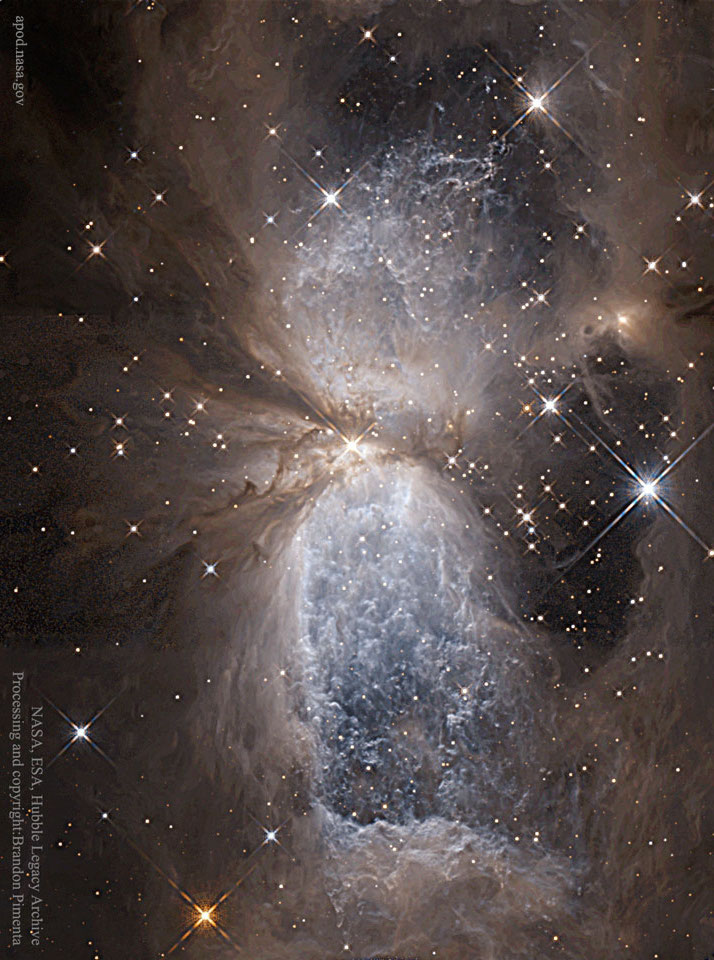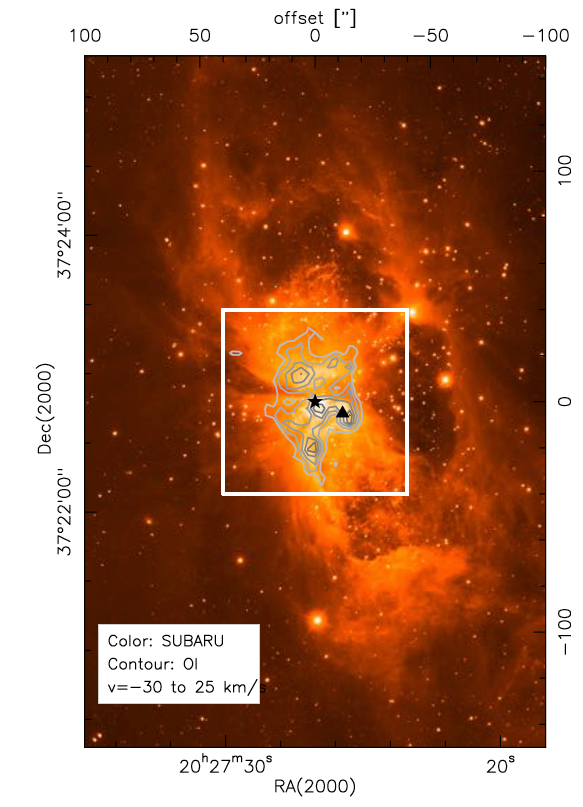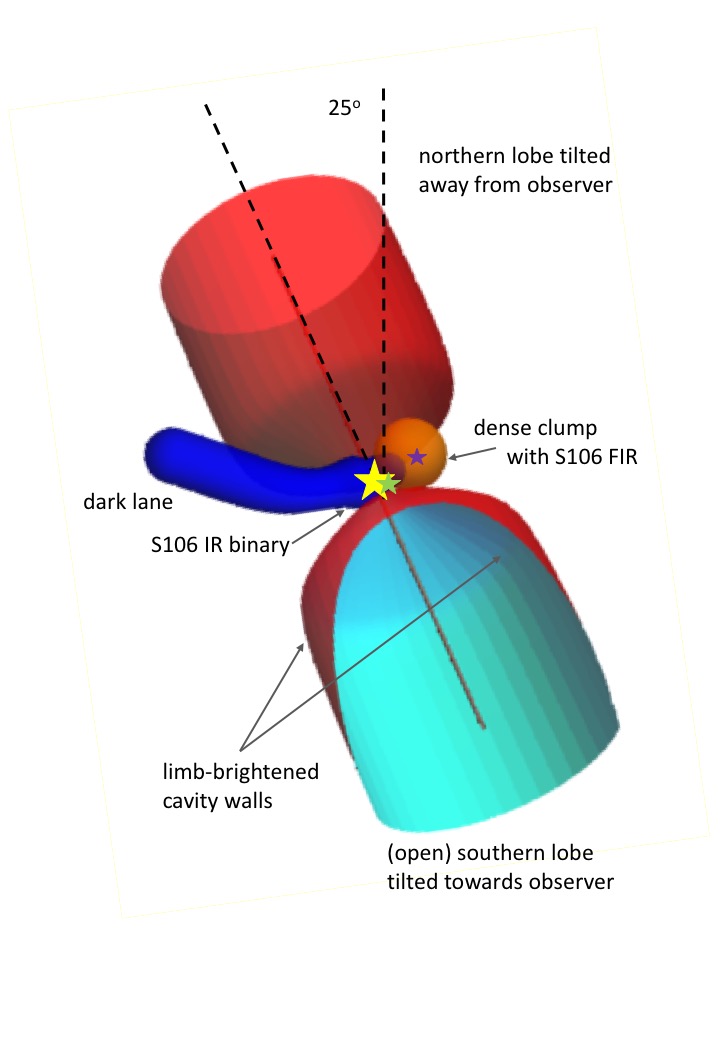The bipolar HII region S106 in Cygnus X at a distance of 1.3 kpc, is an
enigmatic, well studied object. S106 IR was always
thought to be a single late O to early B star, but we recently
(Comeron et al. 2017) showed that it is a close (distance possibly <0.2 AU), massive binary system, most
likely consisting of a late-O and a late-B star.
The system is responsible for the optical visible bipolar emission nebula (see Fig. right).
Associated with this system is an IR-cluster with more than 160 members (Hodapp et al. 1991). A small (30 mas), edge-on
disk-like feature around the two stars was discovered by cm-inteferometry (Hoare et al. 1996, Gibb et al. 2007), but its
exact evolutionary status is not clear (Adams et al. 2015). The system already shows signatures of main sequence stars,
emitting copiously in the UV and driving an ionized wind with a velocity of 100 to 200 km/s into the bipolar cavity.
A cartoon of the region is shown in the Figure below.
We observed S106 in the OI atomic fine structure line at 4.74 THz (63.2 micron)
and the CO 16-15 rotational line at 1.84 THz (162.8 micron) using the
GREAT receiver onboard SOFIA.
The total OI emission is shown in the Figure below, overlaid to a Subaru IR image.
|

|





